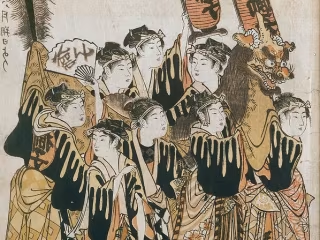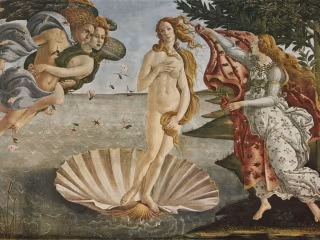Ran: Goddess of the Sea
0
Ghostwriter
Blog Writer
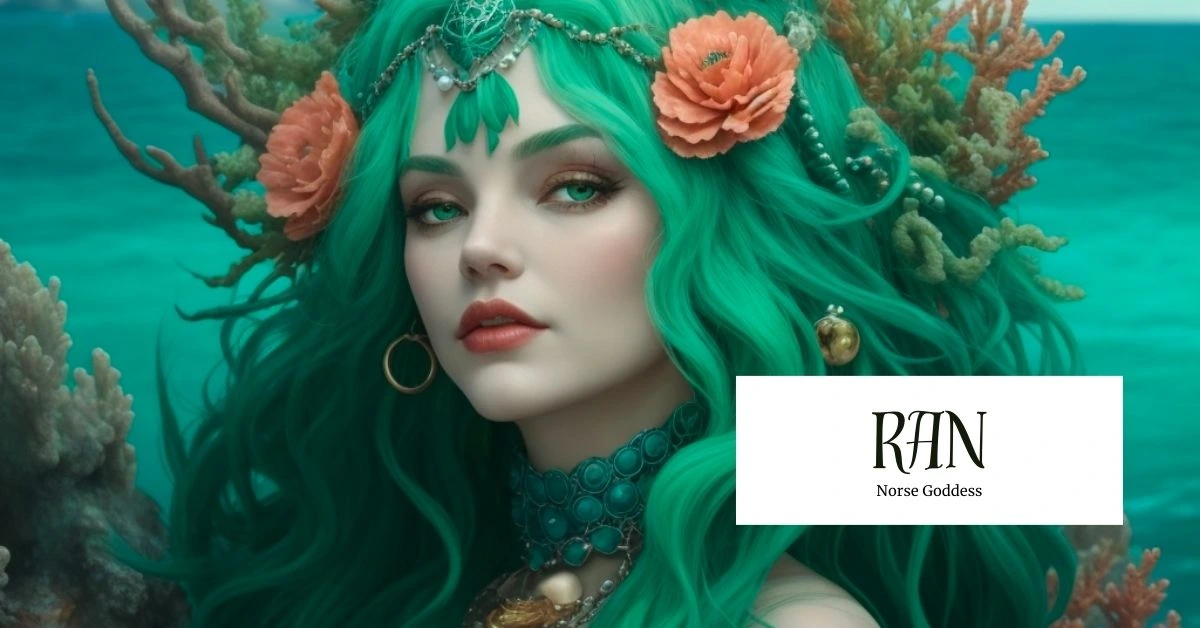
The goddess Ran is a divine being who holds sway over the profound depths of the ocean, exercising dominion over the waves and exerting a profound influence over the fates of mariners and seafarers. While Ran’s recognition may not be as widespread as that of the more prominent Norse deities, her significance within the pantheon remains unquestionable. Her divine power over the seas is a force to be reckoned with, and her role as a harbinger of fate to those who venture across the vast expanse of the ocean is both awe-inspiring and humbling.
Overview of Ran
The name “Ran” is believed to have origins in Old Norse terminology, specifically “hrán,” “ráða,” or “ráð,” which collectively suggest notions of “robbery,” “plunder,” or “theft” (Norse Goddess Ran: The Powerful Marine Divinity – Old World Gods). This etymology emphasizes her pivotal role as a sea goddess who commands the turbulent waters and exercises dominion over the souls of those who meet their watery demise (Megas). Her association with the sea and its unpredictable nature grants her a unique and formidable presence in Norse mythology, resonating with the unpredictability and vastness of the ocean itself. The maritime symbolism in her name mirrors her essential role as the collector of souls in the perilous depths of the sea, further adding depth and mystery to her character within the pantheon.
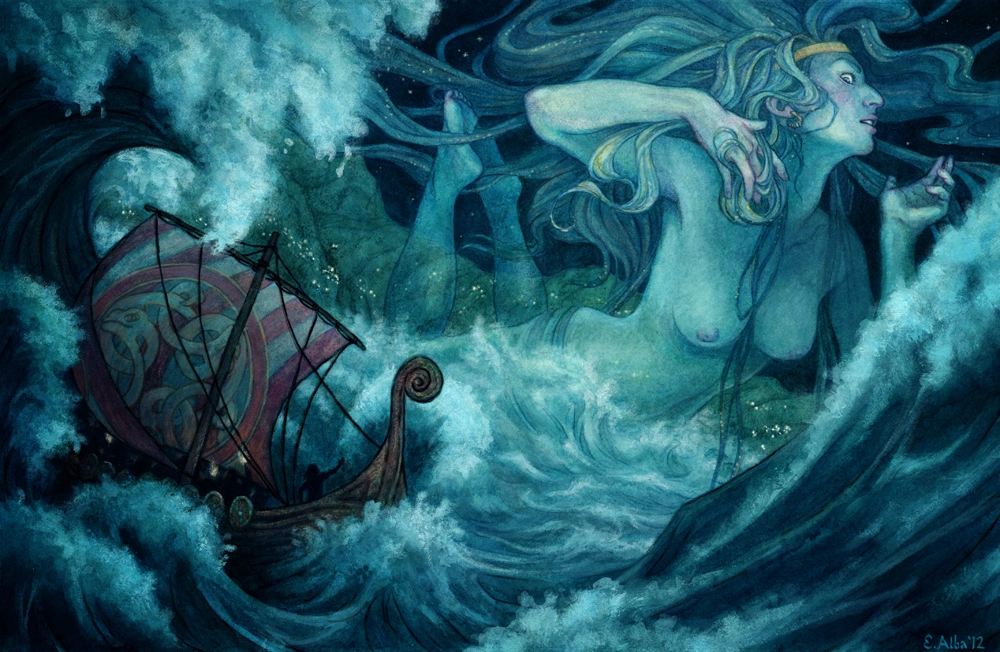
Source: albaillustration
Titles
Mistress of the Drowned
Sea Queen
The Keeper of Treasures
Abilities
The Sea Queen, Ran, holds absolute dominion over the seas, and her awe-inspiring capabilities evidence her command over the maritime realm (Megas). One of her most renowned abilities is her power to manipulate the elements of the ocean. With ease, she conjures and controls storms of tremendous ferocity, capable of sending even the mightiest vessels into turmoil (Norse Goddess Ran: The Powerful Marine Divinity – Old World Gods). Ran’s mastery also extends to creating tempestuous waves that challenge the most experienced sailors and test their resolve in the face of nature’s fury (Dan).
Characteristics
The depiction of Ran as a sea goddess is visually striking and commanding, with her vivid portrayal providing a compelling image of her dominion over the depths of the ocean (Megas). Her long, flowing hair is a prominent aspect of her physical appearance, described as having a seaweed-green hue (Dan), visualizing her connection to the deep-sea domain. Furthermore, Ran is often portrayed wearing attire adorned with pearls and corals (“Nine Sisters: Ran, Mother of the Sea”), symbolizing her regal stature and the vast riches beneath the ocean’s surface. Her enigmatic gaze, deep and mysterious, reflects the unpredictable nature of the sea she governs. Altogether, Ran’s depiction as a sea goddess underscores her intimate connection to the ocean’s depths and hidden mysteries.
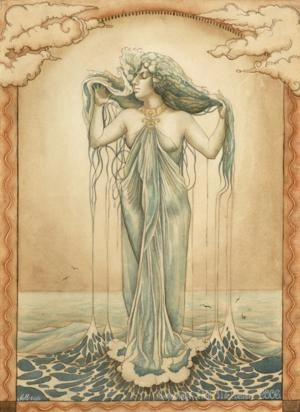
Source: Northern Tradition Paganism
Traits
Ran’s defining characteristic is her propensity for unpredictability, much like the sea’s mercurial moods. Her demeanor can swiftly transition from calm and benign to fierce and wrathful (Megas). Ran takes on shades of protector and menace (“Nine Sisters: Ran, Mother of the Sea”) in her relationship with sailors and seafarers. Mariners may invoke her name for safe passage and protection, recognizing her as a goddess capable of safeguarding them from the perils of the sea. However, they also understand the need to appease her, for neglecting to do so might incur her wrath and result in treacherous voyages. Ultimately, Ran commands profound respect and reverence in Norse mythology.
Symbols
The Norse goddess of the sea is adorned with many symbols that underscore her deep connection to the maritime realm. Among these symbols, her net, known as “Ránar-úði,” stands out as the most significant emblem associated with her. This net represents her power to collect the souls of those who meet their tragic end in the depths of the sea (Megas). Moreover, it symbolizes her ability to ensnare the unwary, emphasizing the unpredictable and perilous nature of the ocean.
Seaweed also plays a crucial symbolic role in Ran’s imagery. Her long, flowing hair is often depicted as having a seaweed-green hue (“Nine Sisters: Ran, Mother of the Sea”), linking her directly to the underwater world and emphasizing her intimate connection with the ocean’s depths and the life that thrives therein. In addition, pearls and corals hold significant meaning in Ran’s portrayal (“Ran: The Norse Goddess of the Sea”). These precious treasures from the sea are emblematic of her association with the hidden wealth concealed beneath the waves and highlight her role as a guardian of the ocean’s riches. Overall, Ran’s imagery is rich with symbolism that underscores her dominion over the sea’s bounty.
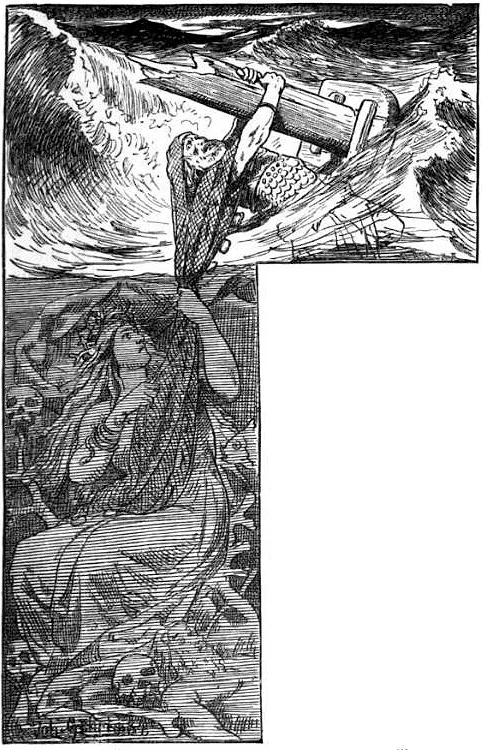
Source: Wikipedia
Festivals and Rituals
The observation of “Ran’s Tide” is a significant celebration typically observed during the winter months (Megas). This festival is a time for seafarers to express their devotion to Ran by offering gifts and prayers. During this time, various offerings are ceremoniously cast into the sea as tokens of appeasement, including coins, jewelry, and other valuables. The primary objective of these offerings is to gain the goddess’s favor and ensure a safe voyage, seeking protection from her tempestuous moods and the perils of the open water (Dan).
Moreover, specific Norse communities engage in net-weaving rituals to invoke Ran’s protection (“Ran: The Norse Goddess of the Sea”). These rituals involve weaving nets while reciting prayers and invocations dedicated to the goddess. The act of crafting the nets is a symbolic gesture, beseeching Ran to safeguard them in their maritime endeavors.
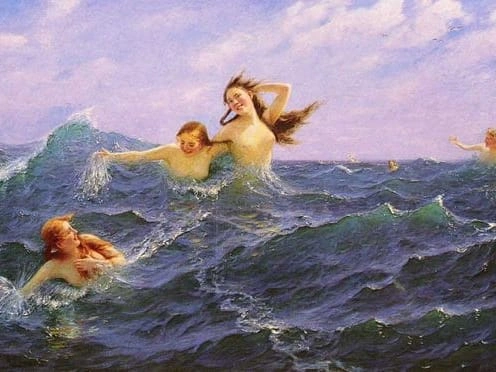
Legends associated with Ran
The goddess Ran stands out as a particularly mysterious figure among the diverse pantheon of Norse deities. Her essence is deeply intertwined with the vast and unpredictable seas, and her persona is shrouded in an aura of mystique that has captured the imagination of countless generations. Through the intricate tapestry of Norse mythology, Ran’s origins and complex relationships with other divine entities are revealed in a series of intriguing and often baffling tales. Her enduring presence intrigues and inspires as her mythic legacy endures through the ages.
Origin story
Within the realm of Norse mythology, the enigmatic figure of the goddess Ran has long been a subject of great intrigue. According to prevailing beliefs, Ran is among the ancient deities that emerged from the primordial chaos that existed before the formation of the world (Megas), thus embodying a primal strength deeply rooted in the foundational forces of creation. As such, her existence is inextricably intertwined with the tumultuous waters that characterized the early cosmos, rendering her an elemental and awe-inspiring deity of immense power and significance.

Source: Mythical Creatures
Wielding the Fate of Seafarers
One legend illustrates Ran’s pivotal role in the realm of souls, especially those who meet their tragic end at sea. This myth serves as a testament to her dominion over the destinies of sailors and her complex duality as both a guardian and a collector of souls (Norse Goddess Ran: The Powerful Marine Divinity – Old World Gods). Ran wields her formidable power through her great net, renowned as “Ránar-úði.” This net, which captures the souls of those unfortunate enough to perish in the ocean’s depths, traps them in its ethereal strands.
Transported to her underwater realm, a mysterious and enigmatic domain that stands as a bridge between the mortal world and the afterlife, souls find themselves under Ran’s watchful gaze, and their fate is intricately tied to her whims and judgment. This captivating legend underscores the potency of Ran’s influence, portraying her as a deity capable of shaping the fortunes of seafarers. Her dual nature as both protector and collector of souls mirrors the complexities of the sea itself, which can provide bountiful sustenance and treacherous perils in equal measure.

Source: Atlas Mythica
The Temptress of the Sea
This legend surrounding Ran delves into her role as a temptress of the sea. She is believed to be able to lure sailors and seafarers to their doom through her enchanting and mesmerizing songs (Megas). As they sail upon the open waters, her haunting melodies reach their ears, drawing them inexorably closer to the depths she rules. While undeniably alluring, these songs conceal a treacherous intent as Ran seeks to claim their lives and souls for her underwater domain.
This legend highlights Ran’s seductive presence, not merely as a collector of souls but as a multifaceted character capable of leading mortals to their watery demise. It symbolizes the enduring fascination with the sea’s allure and danger, a recurring theme woven throughout Norse mythology.
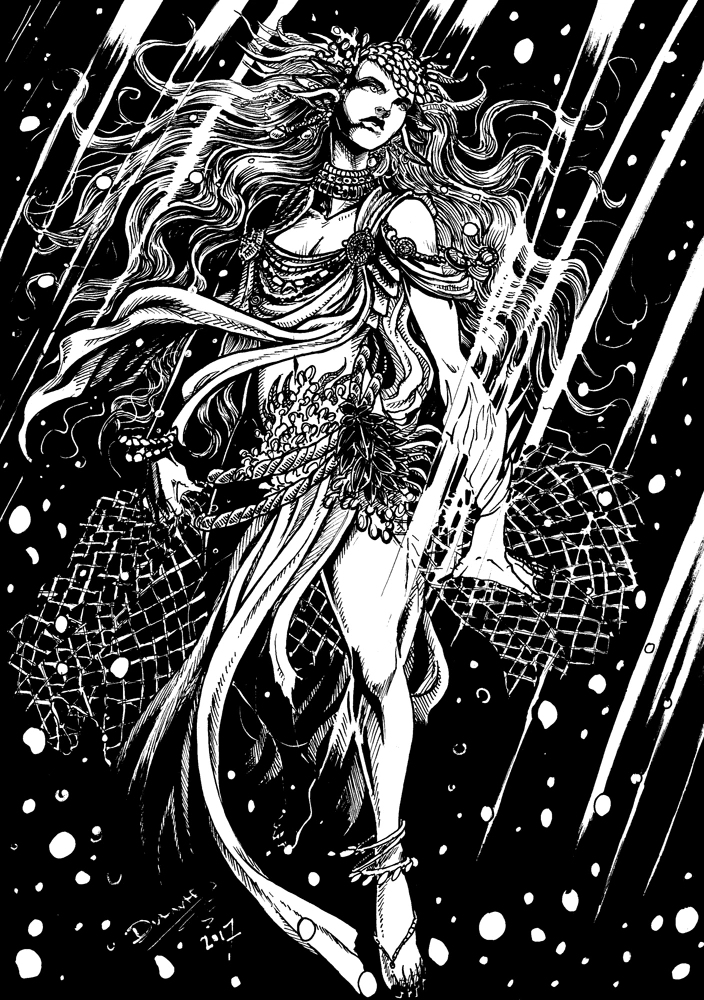
Source: Vikings Wiki
Influences of other religions/cultures on Ran
The perception of Ran in Norse mythology remains uninfluenced mainly by other religions and cultures due to her distinct Norse origins and the self-contained nature of Norse myths. However, it is crucial to recognize that Norse mythology did not exist in isolation and was undoubtedly shaped by earlier belief systems and cultural exchanges with neighboring societies. Centuries of cultural intermingling, migrations, and trade relations with other European cultures have left their mark on Norse mythology, including the character of Ran.
As primary propagators of Norse culture, the Vikings were renowned seafarers and traders who explored distant lands and encountered various cultures along their journeys (“Ran: The Norse Goddess of the Sea”). The sea played a pivotal role in their daily lives, and their mythology naturally incorporated elements reflecting maritime life’s practical aspects. Ran, who embodies the sea’s unpredictable nature, likely emerged as a representation of the ocean’s real dangers and allure. Although rooted in Norse tradition, her character could have been influenced by the experiences and beliefs of neighboring cultures encountered during the Viking Age.
Modern appearances
Ran still appears in various contemporary expressions of art, literature, and pop culture. While not as well-known as other Norse figures, her enigmatic and powerful nature inspires artists and authors who draw from Norse mythology. The acclaimed video game “God of War” is one such example, where Ran assumes a prominent role as a formidable and mysterious character. Moreover, the resurgence of interest in Norse paganism and Ásatrú has led to her continued honor alongside other Norse deities in modern-day rituals and gatherings. Indeed, Ran’s enduring relevance and allure in both the past and present demonstrate her importance as a figure of mythological and spiritual significance.
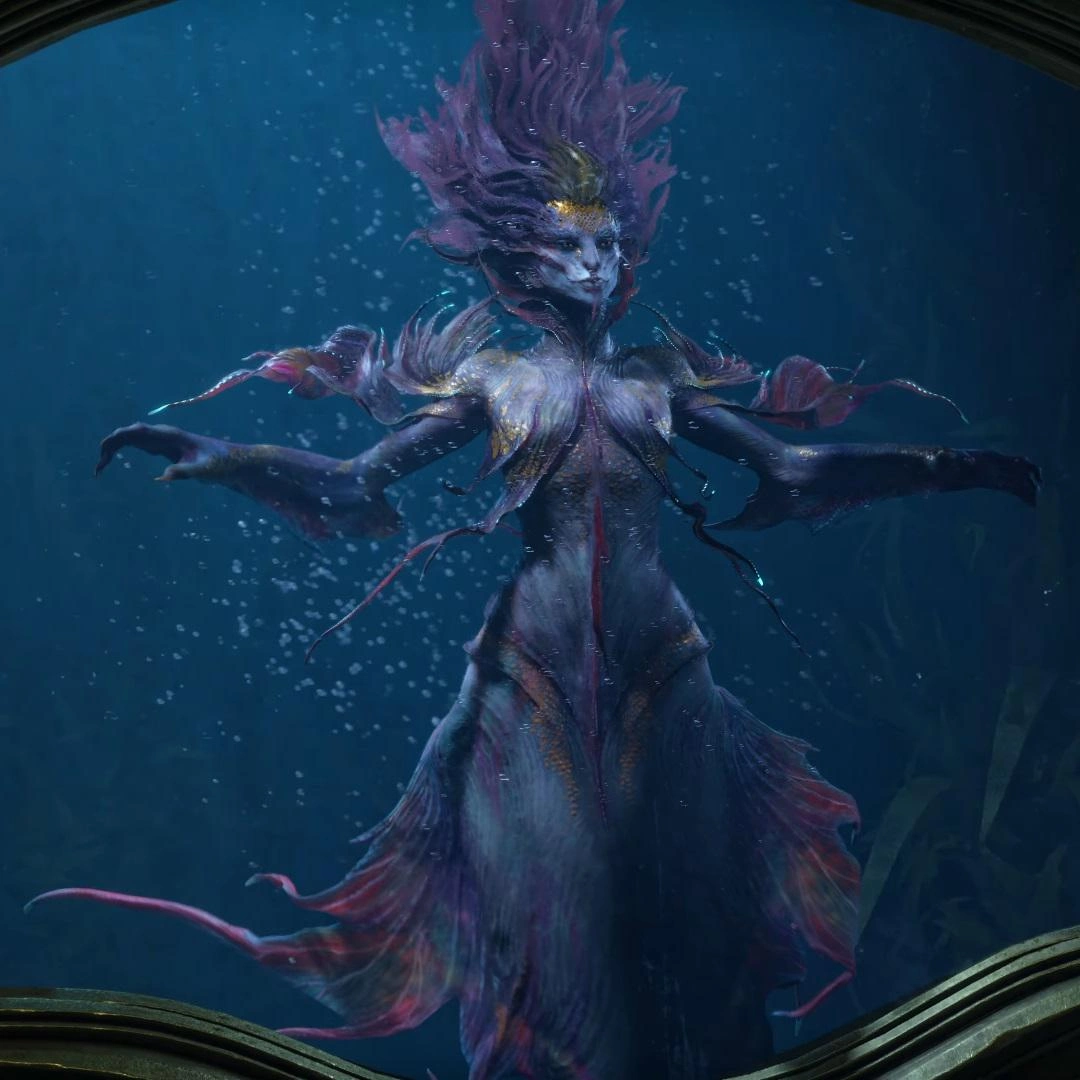
Source: Reddit
Final thoughts
The enduring presence of Ran in both ancient myth and contemporary culture reflects humanity’s ongoing fascination with the mysterious and unpredictable depths of the ocean. As a deity that embodies the ever-changing and often treacherous nature of the sea, her legends emphasize her power over the fates of sailors, her complex relationship with other deities, and her role as a collector of souls. While she rarely appears in modern times compared to some of her divine counterparts, her influence on maritime culture and mythology is still prevalent.
References
Dan. “Aegir and Ran.” Norse Mythology for Smart People, norse-mythology.org/gods-and-creatures/giants/aegir-and-ran/.
Megas, Vasilis. “Ran | the Norse Goddess of the Sea.” Norse Mythology & Viking History, 12 Sept. 2022, vikingr.org/norse-gods-goddesses/ran.
“Nine Sisters: Ran, Mother of the Sea.” Www.northernpaganism.org, www.northernpaganism.org/shrines/ninesisters/ran/honoring-ran.html. Accessed 15 Sept. 2023.
Norse Goddess Ran: The Powerful Marine Divinity – Old World Gods. 6 July 2023, oldworldgods.com/norse/norse-goddess-ran/.
“Ran: The Norse Goddess of the Sea.” Viking Style, 14 July 2023, viking.style/ran-the-norse-goddess-of-the-sea/#google_vignette. Accessed 15 Sept. 2023.
Did we miss something? Do you know another aspect of this legend? Don't hesitate to reach out!
Like this project
0
A client hired me to write several informative pieces on Norse Goddesses, and this blog post centers around the Goddess of the Sea, Ran.
Likes
0
Views
974
Tags
Ghostwriter
Blog Writer


